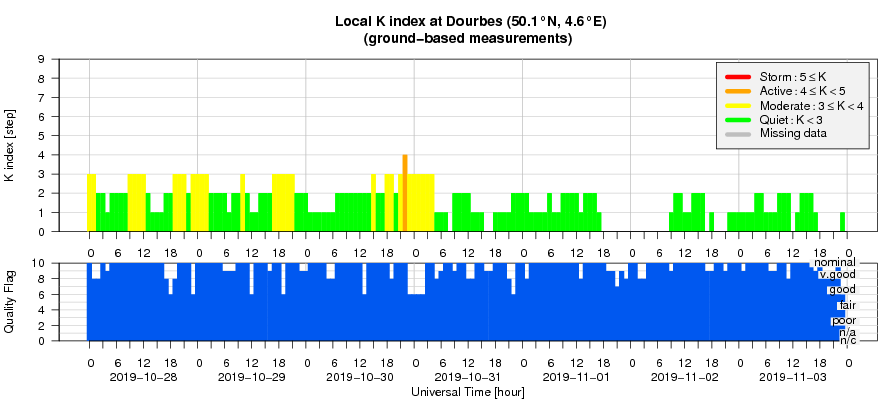- Table of Content
- 1.Space Weather ...
- 2.Review of sola...
- 3.PROBA2 Observa...
- 4.The Internatio...
- 5.Review of geom...
- 6.Geomagnetic Ob...
- 7.The SIDC space...
- 8.Review of iono...
2. Review of solar activity
3. PROBA2 Observations (28 Oct 2019 - 3 Nov 2019)
4. The International Sunspot Number by SILSO
5. Review of geomagnetic activity
6. Geomagnetic Observations at Dourbes (28 Oct 2019 - 3 Nov 2019)
7. The SIDC space weather Briefing
8. Review of ionospheric activity (28 Oct 2019 - 3 Nov 2019)
Space Weather is a fun subject
We welcomed 10 people that wanted to learn about Space Weather. The keys in remembering and understanding fully words are 'pictionary', 'taboe' and 'personification'.
Want to know more about it, join for a next STCE Space Weather Introductory Course. The people on the picture are now full fletched certified Space Weather experts!
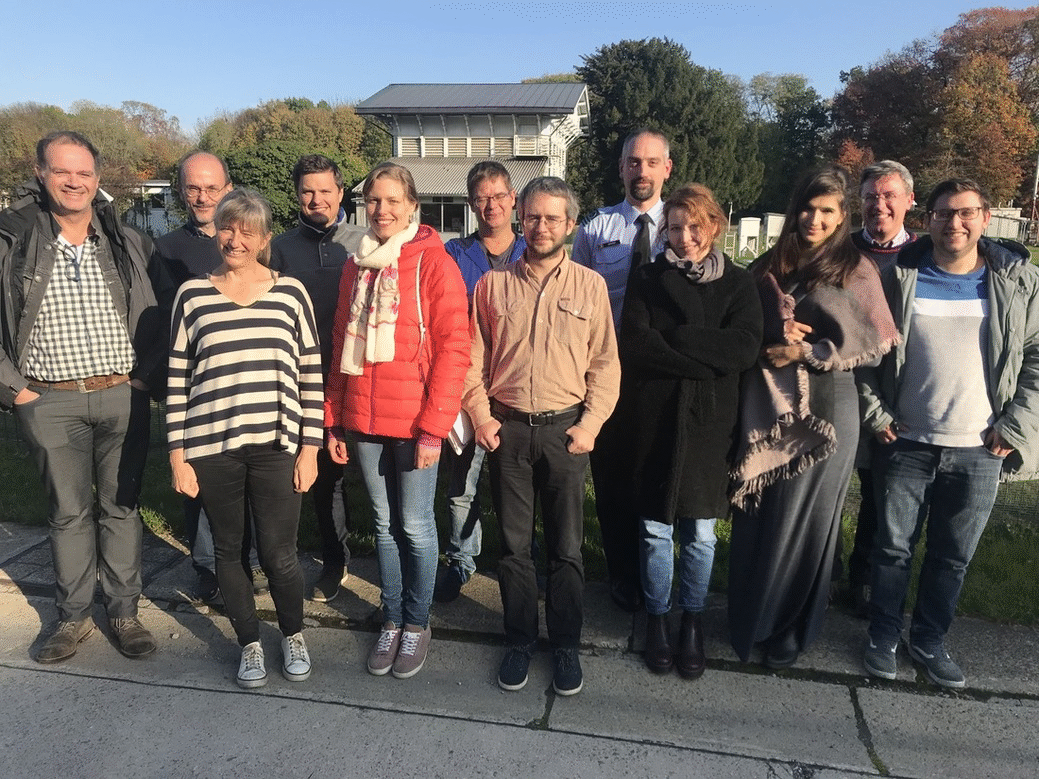
Review of solar activity
The solar disk was spotless at the beginning of the week.
NOAA AR 2750 (alpha magnetic field configuration, region belonging to the new solar cycle 25) emerged in the southern hemisphere on November 1 and decayed into a plage the day after. NOAA AR 2751 appeared on November 2, close to the equator, with a beta magnetic field configuration.
Neither of these regions produced any flare, there were no flares throughout the week.
At the beginning of the week a negative polarity equatorial coronal hole was traversing central meridian (the crossing had started the week before).
There were no Earth-directed CMEs and the greater than 10 MeV proton flux was at nominal levels throughout the week.
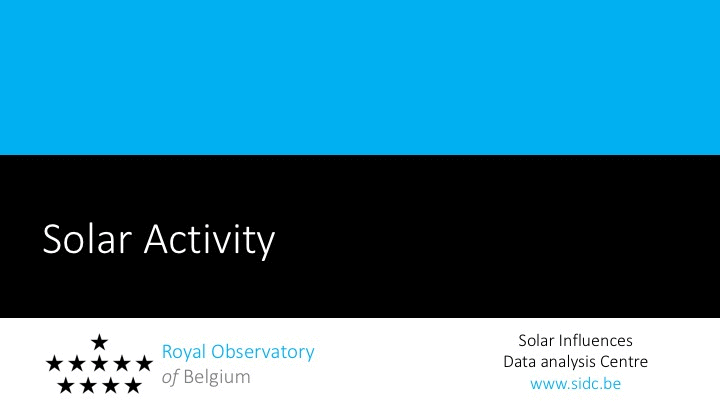
PROBA2 Observations (28 Oct 2019 - 3 Nov 2019)
Solar Activity
Solar flare activity was very low during the week.
In order to view the activity of this week in more detail, we suggest to go to the following website from which all the daily (normal and difference) movies can be accessed: http://proba2.oma.be/ssa
This page also lists the recorded flaring events.
A weekly overview movie can be found here (SWAP week 501). https://proba2.sidc.be/swap/data/mpg/movies/weekly_movies/weekly_movie_2019_10_28.mp4
Details about some of this week's events can be found further below.
If any of the linked movies are unavailable they can be found in the P2SC movie repository here https://proba2.sidc.be/swap/data/mpg/movies/
Monday Oct 28

An equatorial coronal hole was traversing the central meridian on 2019-Oct-28. It is visible in the SWAP image above. Find a movie of the events here (SWAP movie) https://proba2.sidc.be/swap/data/mpg/movies/20191028_swap_movie.mp4
Friday Nov 1
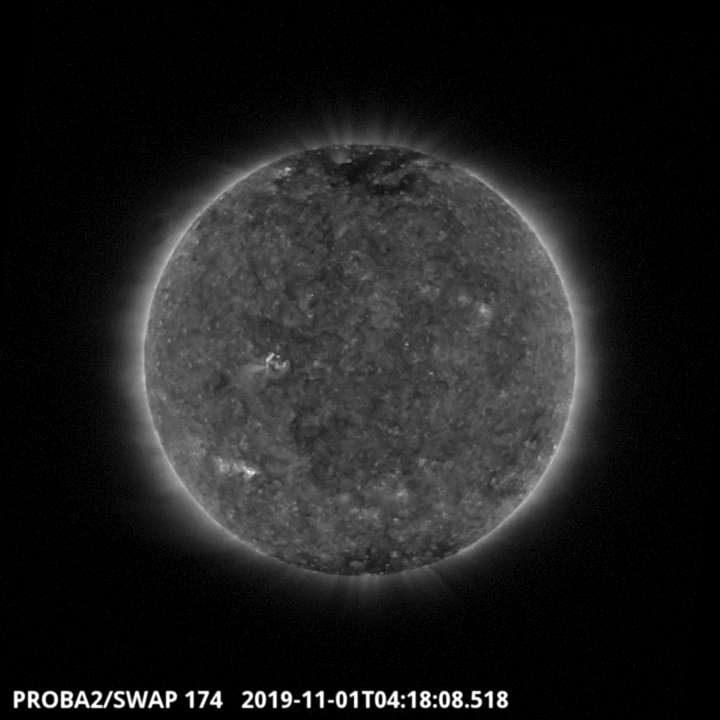
A region belonging to the new solar cycle, 25, emerged in the southern hemisphere on November 1 and decayed into a plage the day after. It didn’t produce any flares. Find a movie of the events here (SWAP movie). https://proba2.sidc.be/swap/data/mpg/movies/20191101_swap_movie.mp4
The International Sunspot Number by SILSO
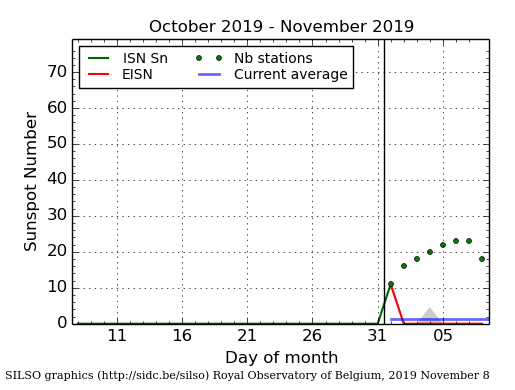
The daily Estimated International Sunspot Number (EISN, red curve with shaded error) derived by a simplified method from real-time data from the worldwide SILSO network. It extends the official Sunspot Number from the full processing of the preceding month (green line). The plot shows the last 30 days (about one solar rotation). The horizontal blue line shows the current monthly average, while the green dots give the number of stations included in the calculation of the EISN for each day.
Review of geomagnetic activity
The Earth was at the start of the week under the vanishing influence of a high speed stream. This lead to a K 5 locally at Dourbes on October 27, from 20:00 UT to 22:00 UT, and Kp went up to 3.
The high speed stream from the negative polarity equatorial coronal hole, combined with the arrival of an expected ICME (CME from October 25) started to affect the Earth on October 29 and caused active conditions both locally and at planetary levels (K and Kp = 4). Starting on October 31, geomagnetic conditions were quiet for the rest of the week.
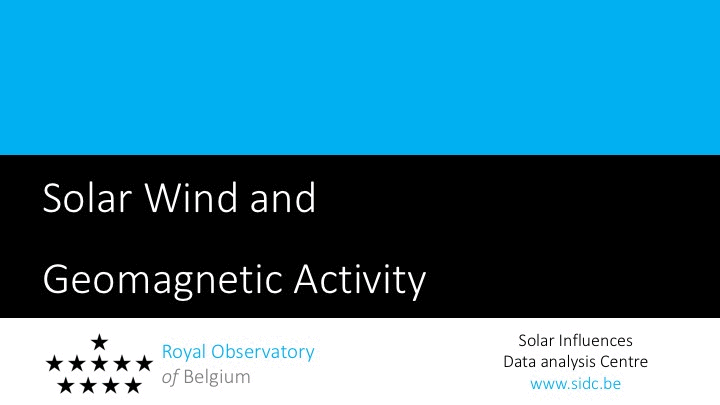
The SIDC space weather Briefing
The Space Weather Briefing presented by the forecaster on duty from Oct 27 to Nov 3. It reflects in images and graphs what is written in the Solar and Geomagnetic Activity report.

The pdf-version: http://www.stce.be/briefings/20191104_SWbriefing.pdf
The automatically running presentation: http://www.stce.be/briefings/20191104_SWbriefing.ppsm
Review of ionospheric activity (28 Oct 2019 - 3 Nov 2019)
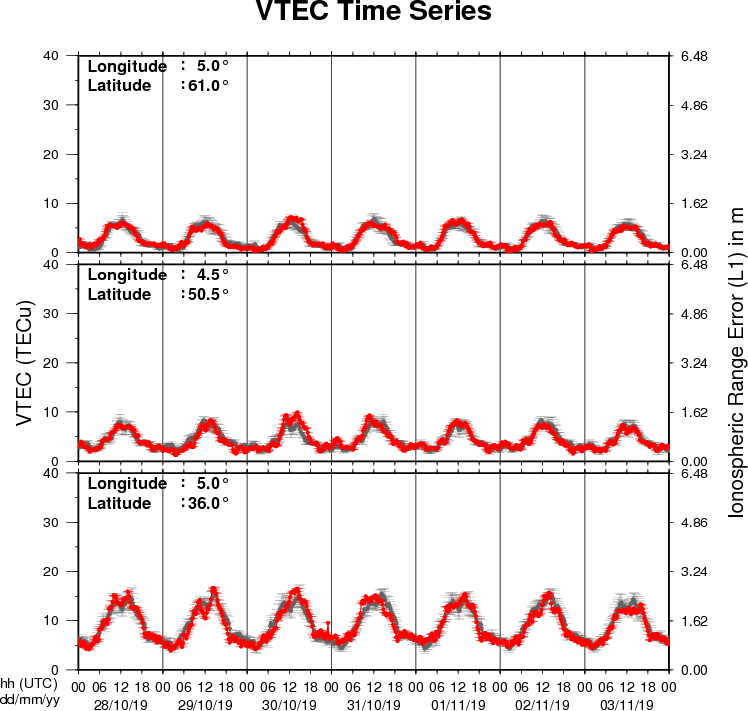
The figure shows the time evolution of the Vertical Total Electron Content (VTEC) (in red) during the last week at three locations:
a) in the northern part of Europe(N61°, 5°E)
b) above Brussels(N50.5°, 4.5°E)
c) in the southern part of Europe(N36°, 5°E)
This figure also shows (in grey) the normal ionospheric behaviour expected based on the median VTEC from the 15 previous days.
The VTEC is expressed in TECu (with TECu=10^16 electrons per square meter) and is directly related to the signal propagation delay due to the ionosphere (in figure: delay on GPS L1 frequency).
The Sun's radiation ionizes the Earth's upper atmosphere, the ionosphere, located from about 60km to 1000km above the Earth's surface.The ionization process in the ionosphere produces ions and free electrons. These electrons perturb the propagation of the GNSS (Global Navigation Satellite System) signals by inducing a so-called ionospheric delay.
See http://stce.be/newsletter/GNSS_final.pdf for some more explanations ; for detailed information, see http://gnss.be/ionosphere_tutorial.php
